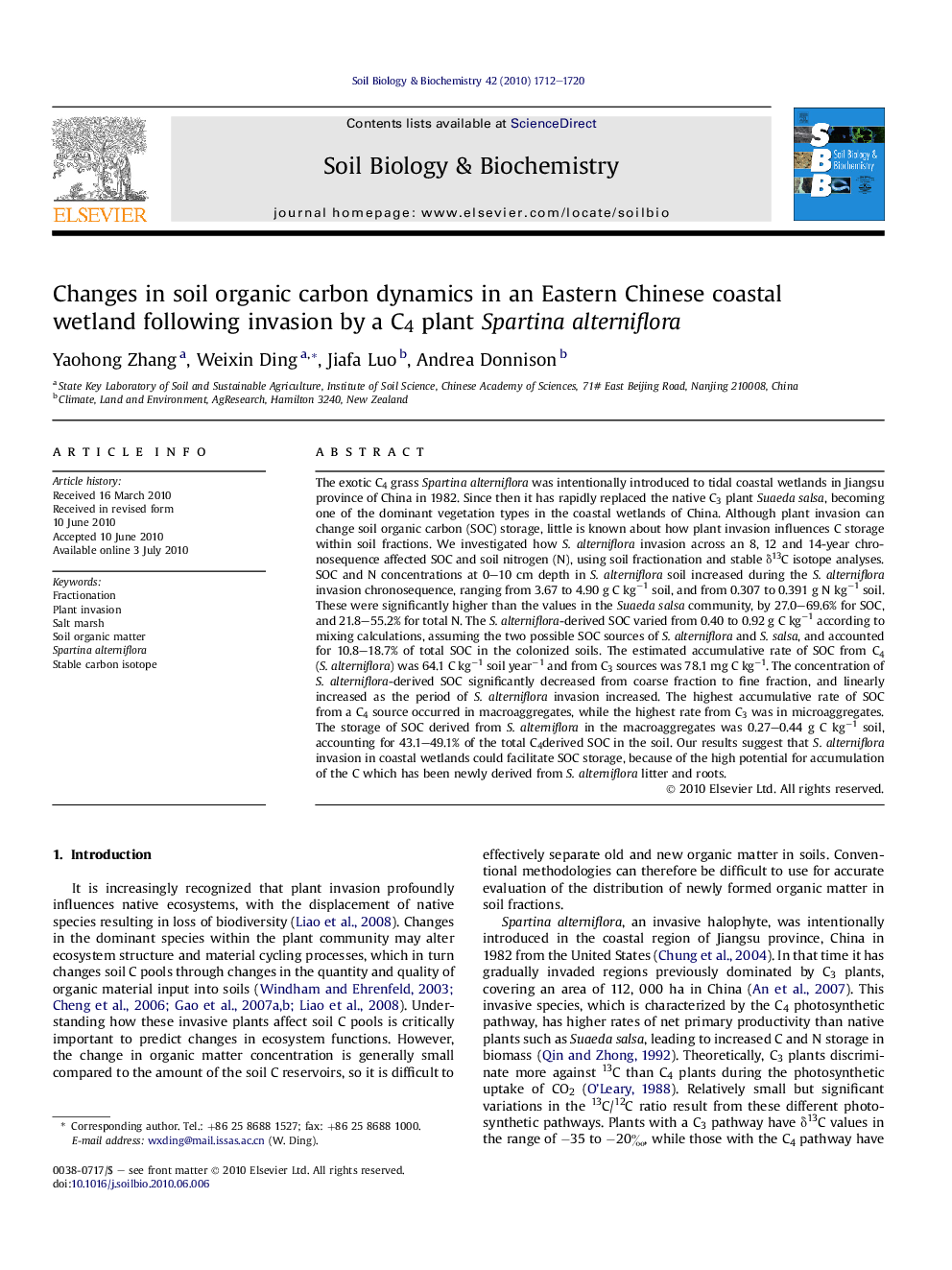| Article ID | Journal | Published Year | Pages | File Type |
|---|---|---|---|---|
| 2025405 | Soil Biology and Biochemistry | 2010 | 9 Pages |
The exotic C4 grass Spartina alterniflora was intentionally introduced to tidal coastal wetlands in Jiangsu province of China in 1982. Since then it has rapidly replaced the native C3 plant Suaeda salsa, becoming one of the dominant vegetation types in the coastal wetlands of China. Although plant invasion can change soil organic carbon (SOC) storage, little is known about how plant invasion influences C storage within soil fractions. We investigated how S. alterniflora invasion across an 8, 12 and 14-year chronosequence affected SOC and soil nitrogen (N), using soil fractionation and stable δ13C isotope analyses. SOC and N concentrations at 0–10 cm depth in S. alterniflora soil increased during the S. alterniflora invasion chronosequence, ranging from 3.67 to 4.90 g C kg−1 soil, and from 0.307 to 0.391 g N kg−1 soil. These were significantly higher than the values in the Suaeda salsa community, by 27.0–69.6% for SOC, and 21.8–55.2% for total N. The S. alterniflora-derived SOC varied from 0.40 to 0.92 g C kg−1 according to mixing calculations, assuming the two possible SOC sources of S. alterniflora and S. salsa, and accounted for 10.8–18.7% of total SOC in the colonized soils. The estimated accumulative rate of SOC from C4 (S. alterniflora) was 64.1 C kg−1 soil year−1 and from C3 sources was 78.1 mg C kg−1. The concentration of S. alterniflora-derived SOC significantly decreased from coarse fraction to fine fraction, and linearly increased as the period of S. alterniflora invasion increased. The highest accumulative rate of SOC from a C4 source occurred in macroaggregates, while the highest rate from C3 was in microaggregates. The storage of SOC derived from S. alterniflora in the macroaggregates was 0.27–0.44 g C kg−1 soil, accounting for 43.1–49.1% of the total C4derived SOC in the soil. Our results suggest that S. alterniflora invasion in coastal wetlands could facilitate SOC storage, because of the high potential for accumulation of the C which has been newly derived from S. alterniflora litter and roots.
